
History of the castle and unique 360° panorama
Plan your visit
The ticket office closes 30 minutes before closing time.
Ticket prices
- Adults – 8,00 €
- Concessions* – 4,00 €
Family ticket
- 1 adult and up to 4 children – 13,00 €
- 1 adult and 1-4 children with the opportunity to participate in educational activities – 14,00 €
- Up to 2 adults and 4 children – 20,00 €
- Up to 2 adults and 1-4 children with the opportunity to participate in educational activities – 22,00 €
Combo tickets
- Historical Triangle (Castellan’s House, the Old Arsenal and Gediminas Castle Tower) – 15,00 €
- Museums in Vilnius (every branch of National Museum of Lithuania that is located in Vilnius) – 30,00 €
Guided tours in Lithuanian or foreign language
- Themed guided tour – 15,00 € (museum tickets not included)
Additional experiences
- Guided tour during predetermined dates, per person – 2,00 € (museum ticket not included)
- Admission to educational activities for children ages 4 and up, and school students – 3,00 €
- Admission to virtual educational activities for school students – 2,00 €
Gediminas Castle Tower is free of charge for the following visitors:
pre-school children; orphans and children who have lost guardianship by their parents; people with a disability and their one accompanying person; persons from 80 years of age; employees of Lithuania’s museums; members of the International Council of Museums (ICOM); residents of children care homes and socially supported children; teachers accompanying groups of schoolchildren; Vilnius Pass card holders (valid for visiting The New Arsenal, The Old Arsenal, The House of Signatories, Gediminas Castle Tower, The Bastion of the Vilnius Defence Wall, Kazys Varnelis House-Museum, House of Histories); students of Lithuanian art schools for children and youth; students of Vilnius College of Technologies and Design; students of Balys Dvarionas decennary music school; members of the Lithuanian Association of Art Historians; members of the International Association of Art Critics; members of the Lithuanian Association of Archaeologists; guides with valid guide ID; guides accompanying groups of tourists; employees of the Cultural Heritage Department at the Ministry of Culture and its territorial branches; cadets and conscripts from General Jonas Žemaitis Military Academy of Lithuania; soldiers of the Lithuanian Grand Duke Gediminas Headquarters Battalion; members of the Lithuanian army volunteer union; employees of Lithuanian Post; journalists; Family Card holders; students of Vilnius Academy of Arts; students of the Faculty of History at Vilnius University; citizens of Ukraine; organised migrant groups; all visitors on the last Sunday of each month.
Educational activities of the National Museum of Lithuania’s expositional locations are free of charge for the following visitors:
children under 3 years of age; residents of children care homes and socially supported children; people with a disability and their one accompanying person; teachers accompanying groups of schoolchildren.
Concessions are applied upon the visitor providing valid ID that prooves right to specific concessions. This ID requirement does not apply to pre-school children and all visitors on the last Sunday of each month.
Information for disabled visitors: exhibition halls of the Gediminas Castle Tower do not have wheelchair access.
The audiovisual guides on Gediminas Hill are free of charge for visitors. The content is available in English, German, Ukrainian, Polish and other languages.
1 hour filming with professional equipment on the Gediminas scenic overlook – 20,00 EUR. Exposition filming is permitted only with the consent of the administration.
General visitor regulations of the National Museum of Lithuania
The tours in the museum are only led by the museum tour guides or the tour guides from the institution with which the museum has concluded an appropriate agreement.
Everyday 10.00 to 20.00
Ticket prices
- Up and down – 3,00 €
- Up or down – 2,00 €
Funicular is free of charge for: preschool children; orphans and socially vulnerable children; disabled people (+ one accompanying person for one disabled person); senior people over 80; Ukraine citizens.
The ticket office closes 30 minutes before closing time. If the funicular is used only to go down the hill, a ticket should be acquired at the ticket office immediately following the descent. Parental supervision required for children under twelve years of age.
Tel. +370 (5) 212 00 17


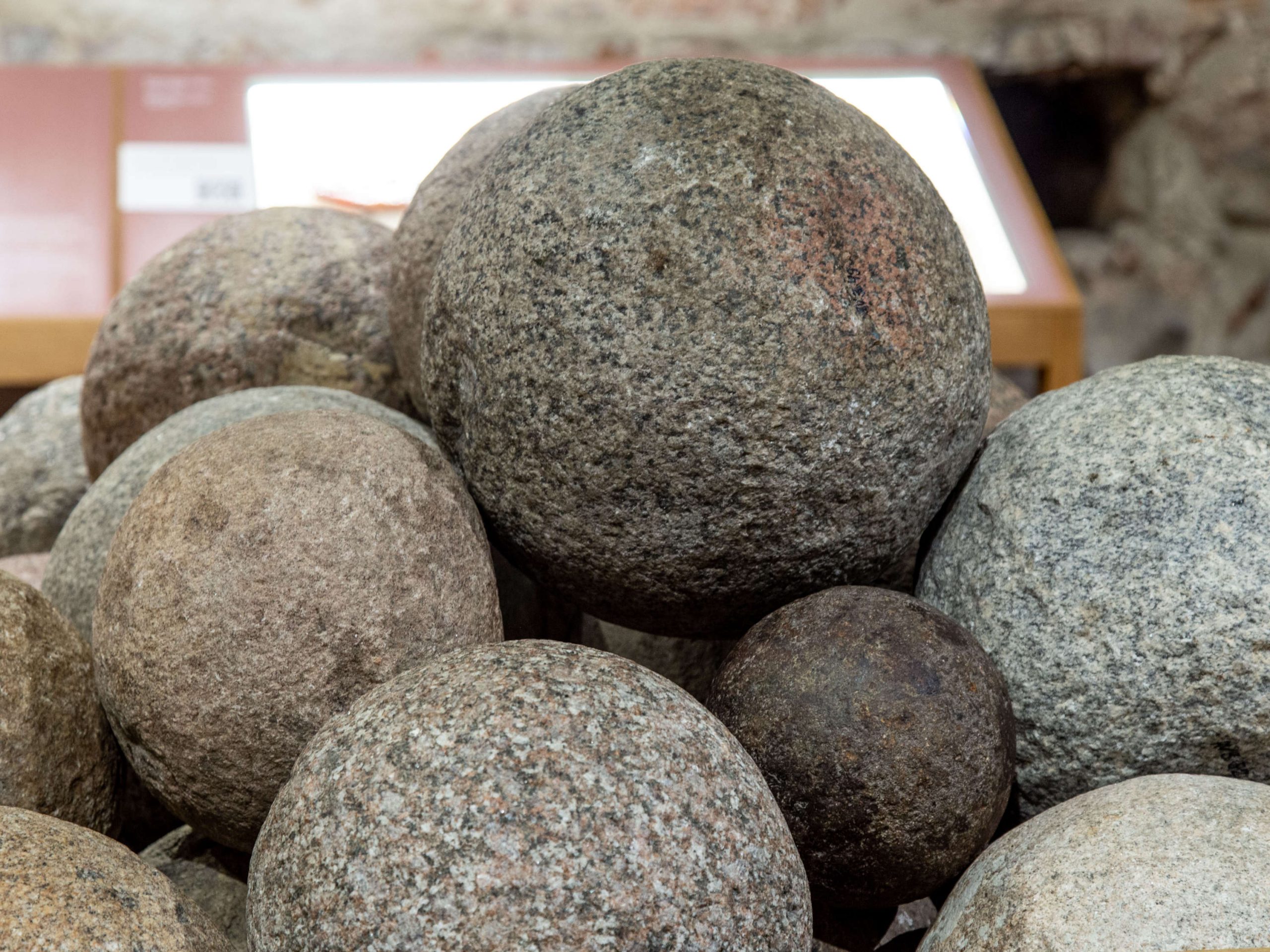


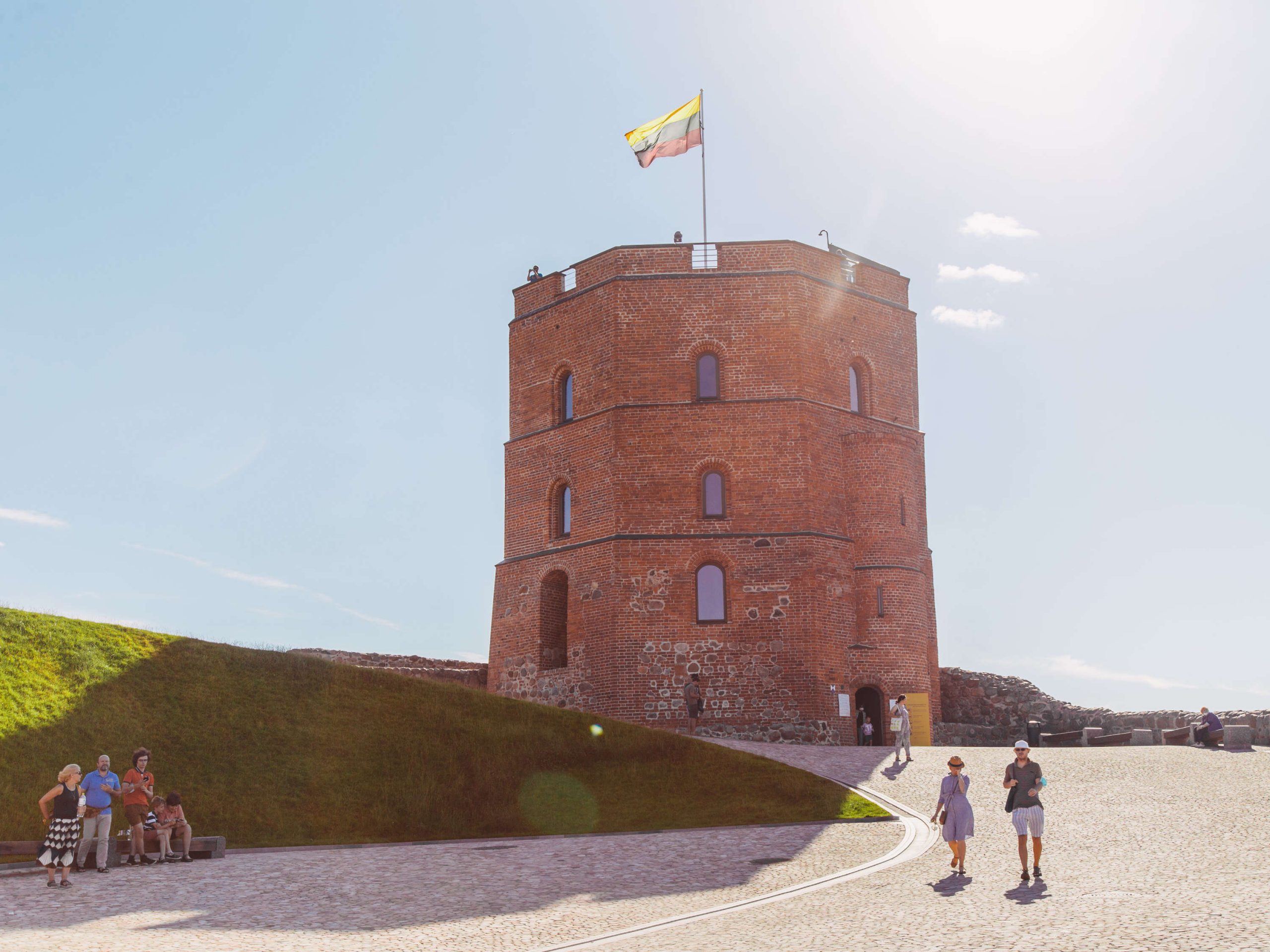
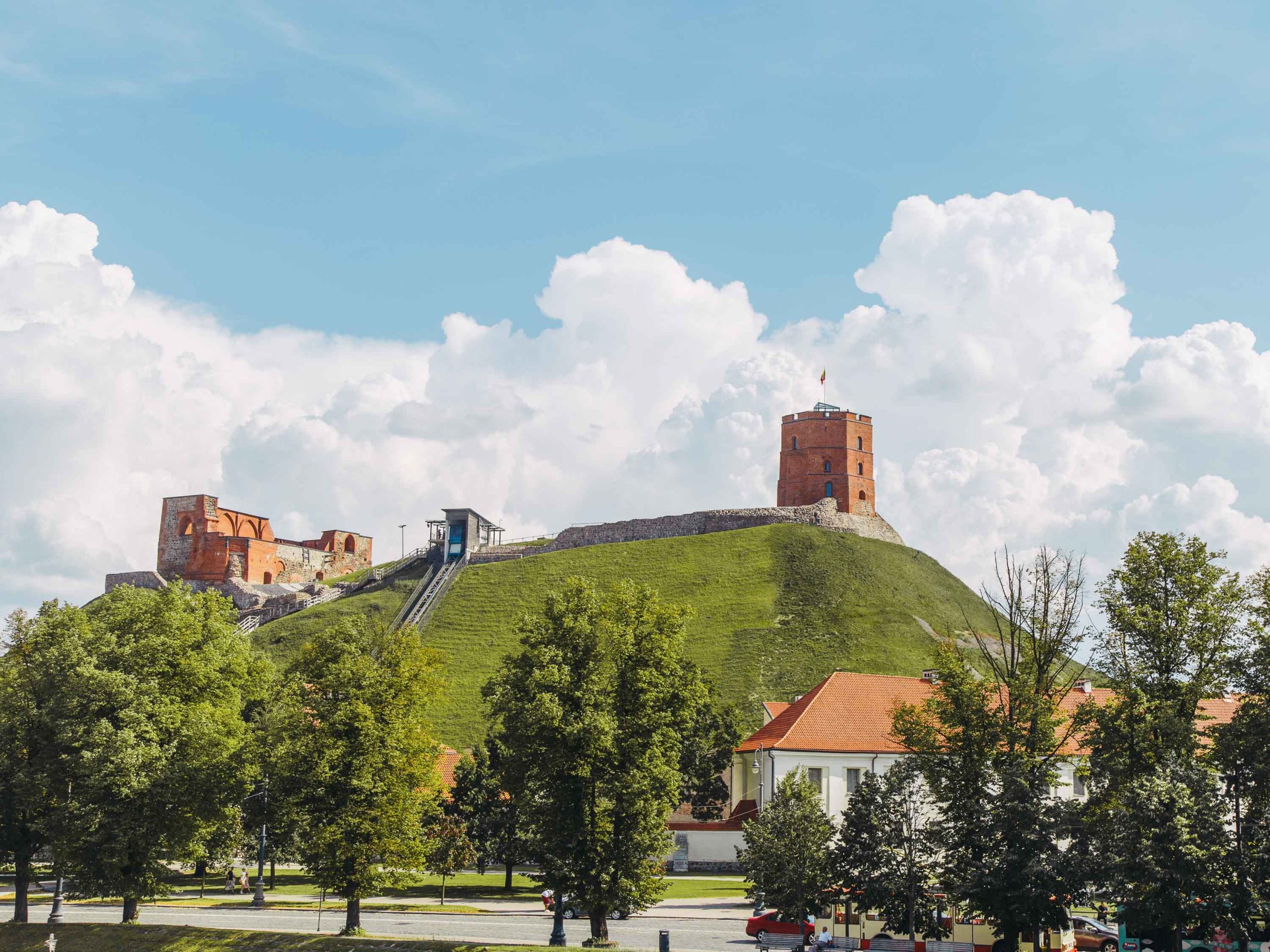
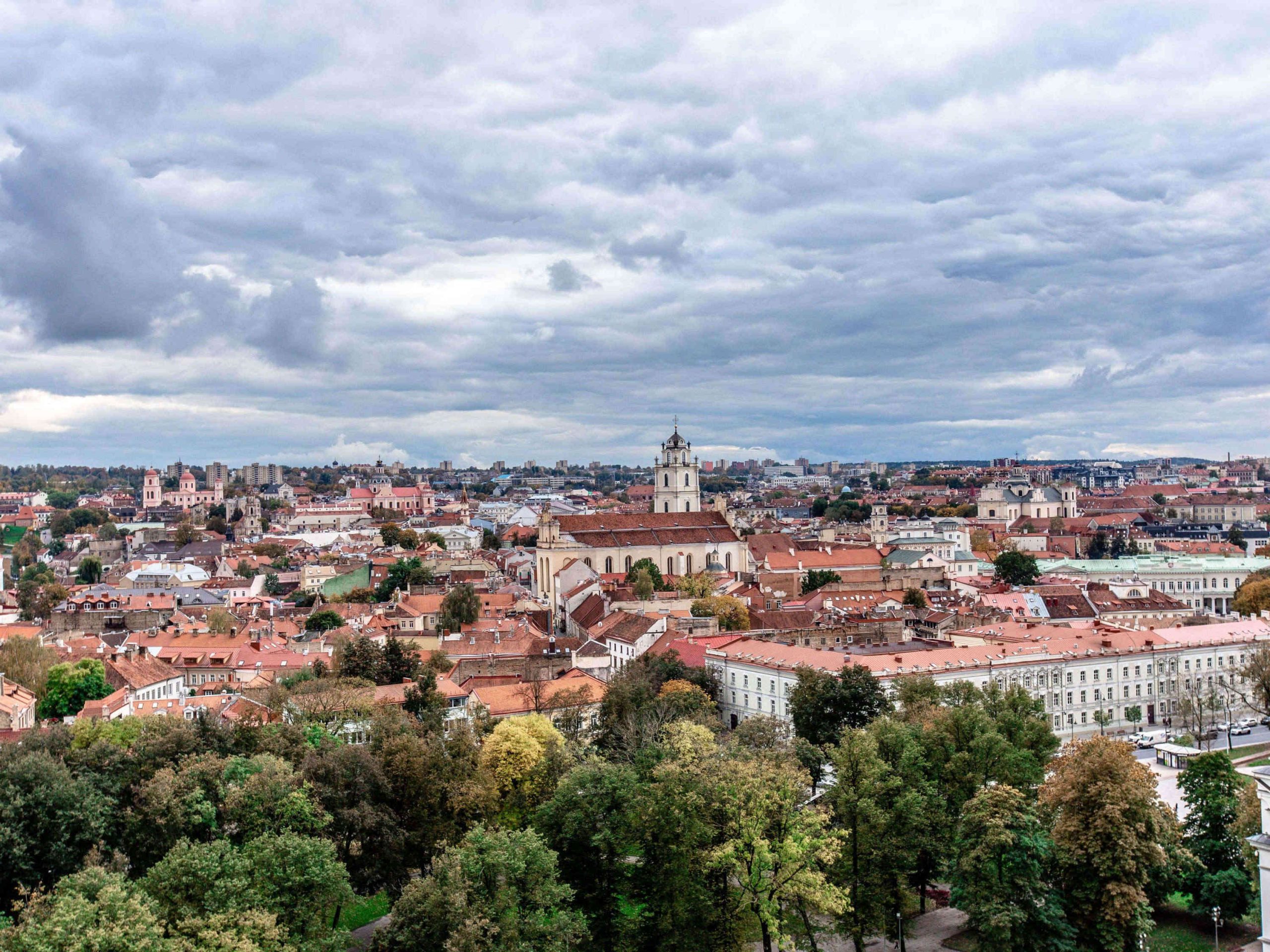
About us
Gediminas Castle Tower is the most frequently visited branch of the National Museum of Lithuania. Its exhibition invites visitors to learn about the history of Vilnius as the centre of the Grand Duchy of Lithuania, and also to take in the most spectacular panoramic view of the city.
What will you see?
Canon balls from 14th and 15th century attacks by the Crusaders; from the same period – one of several wooden cross-bow arrows found in Lithuania, as well as a ritual axe made of horn and adorned with ancient Baltic swastika symbols; letters written by Gediminas in 1322–1323 to Pope John XXII and European merchants; an interactive installation dedicated to the Baltic Way allowing visitors to experience being part of the event.
What will you learn?
As the visitor climbs up the narrow steps of the tower they will discover several levels of exhibits presenting the development of the Vilnius Castle territory, as well as exhibits of Baltic jewellery and important military artefacts.
The second floor contains the interactive exhibition “Visual timeline: a look through the Windows of Gediminas Tower”, which invites visitors to experience an attack by Crusaders; they can also see what Renaissance Vilnius looked like and compare this image with a panorama of the Upper and Lower castles from 1785, a time when these buildings had already lost their political importance. This journey is an opportunity to experience the changes the city has gone through from the 14th to the 21st centuries – by both looking through the tower windows, then at the tower itself.
On the third floor visitors can experience what it meant to stand in the Baltic Way – one of the most memorable of the big anti-Soviet demonstrations, when, in August 1989, close to 2 millions people linked hands from Vilnius to Tallinn.
From the Tower’s observation square a panorama of Vilnius opens up and it seems as though one can hold the city in one’s hand. And the fluttering national flag reminds us that Gediminas Tower is a symbol not only of Vilnius, but of Lithuania as a whole.
History of the building
Built in the 14th and early 15th centuries, the tower was originally a four-story structure designed for defence against firing weapons. It was also inhabited.
After standing unused for a long period, the structure’s walls began to crack, and by the 19th century the fourth floor had collapsed. Under Imperial Russia’s occupation of Lithuania the Upper Castle was turned into a military citadel: in 1832–1834 the tower’s two upper floors were dismantled, and a hexagonal wooden structure for sending optical telegrams was erected on top of the remaining two stories. With this addition the tower became the highest building in Vilnius. The Russian Imperial flag fluttered from its roof and salvos were fired daily from canons positioned on the hill. More than once the building was repaired and its foundations reinforced, and in 1895 it came to house a fire watch tower.
The flag of the Republic of Lithuania was raised on Gediminas Castle Tower for the first time on January 1, 1919.
Historical research into and protection of the tower began after 1920; the building’s interior was cleared out and its wooden addition was finally removed. With the start of the Second World War, plans for opening a museum in the tower were disrupted. Bombing of the city led to further damage, but after the war ended the tower was quickly repaired. The museum that exists here today opened its doors for the first time in 1960, and since then it is one of the most visited heritage sites in Lithuania. Following an initiative of Sąjūdis, the Lithuanian movement for independence from the Soviet Union, on 23 August 1989 Gediminas Castle Tower served as the start of a human chain that connected Lithuania, Latvia, and Estonia in the Baltic Way – a protest against the signing of the Molotov–Ribbentrop Pact, the German–Soviet treaty signed on that day in 1939 and which led to the occupation of the three states by the Soviet Union.
The Gediminas Tower Exhibition reflects all of the main historical periods on the history of Upper Vilnius Castle, from the Grand Duchy of Lithuania’s resistance to the Crusaders to the battle to establish the modern Lithuania state’s independence.
Visiting The Gediminas Hill
Gediminas Hill is free to visit during the day.
In order to get to the top of the hill visitors can take a path from the side of the Vilnia River on Trispalvė alley (not suitable for bicycles, wheelchairs or prams) of use the funicular (from the inner courtyard of the Old Arsenal, Arsenalo g. 3).
The gate of the fence surrounding the Gediminas hill fort is closed from 23.00 to 7.00.
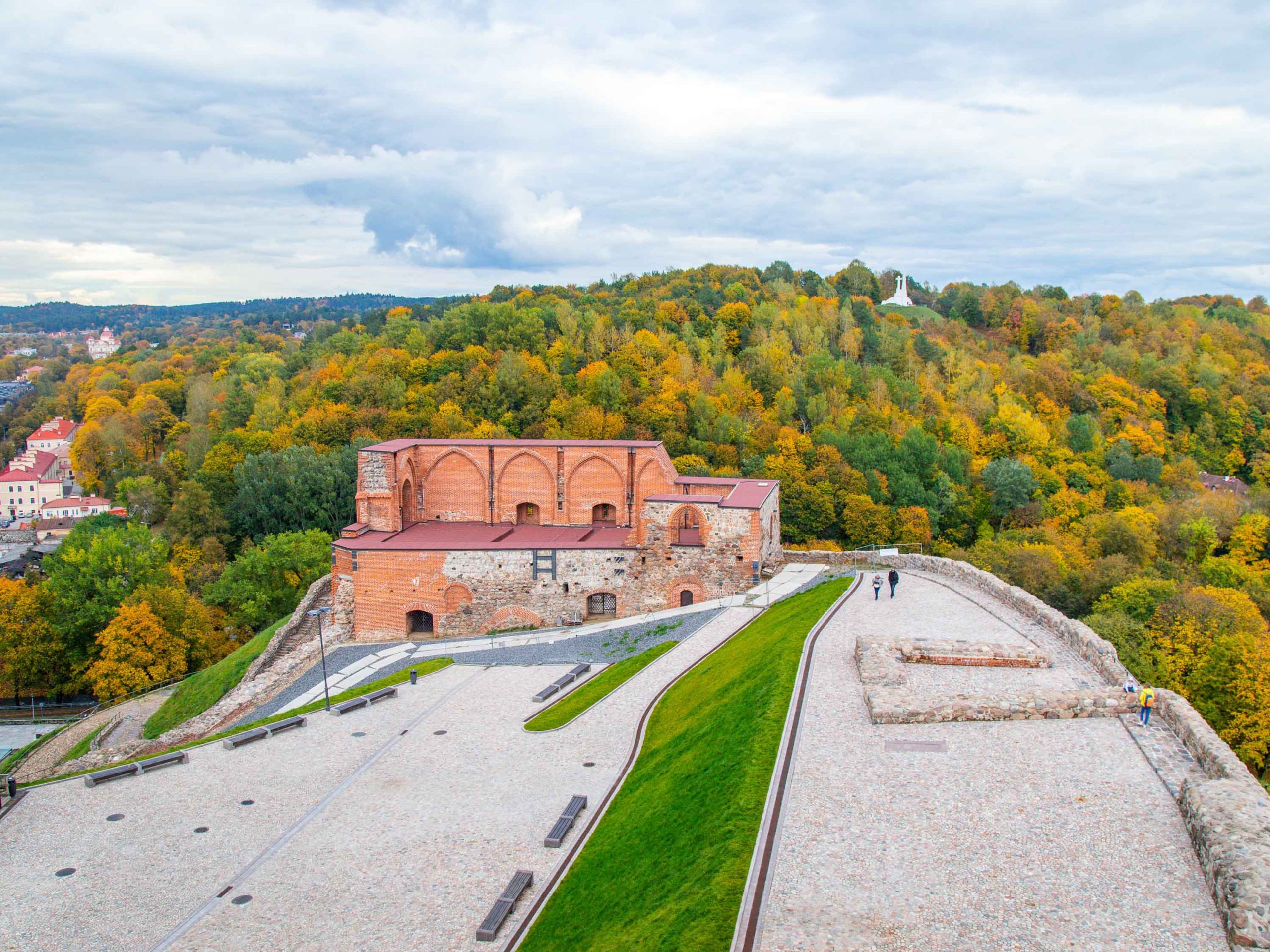

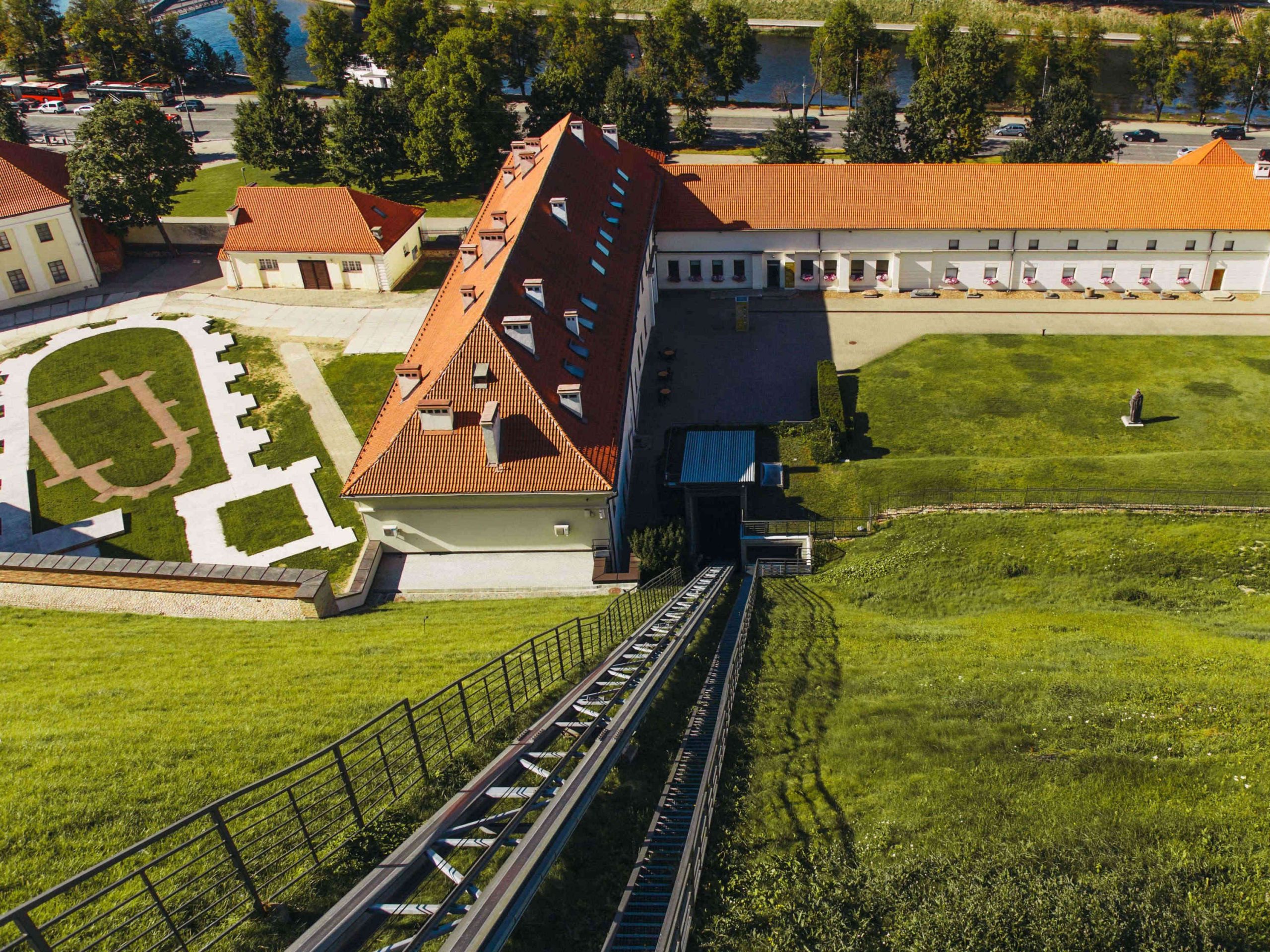
Contacts
Address
How to find us?
In order to get to the top of the hill visitors can take a path from the side of the Vilnia River on Trispalvė alley or use the funicular.

